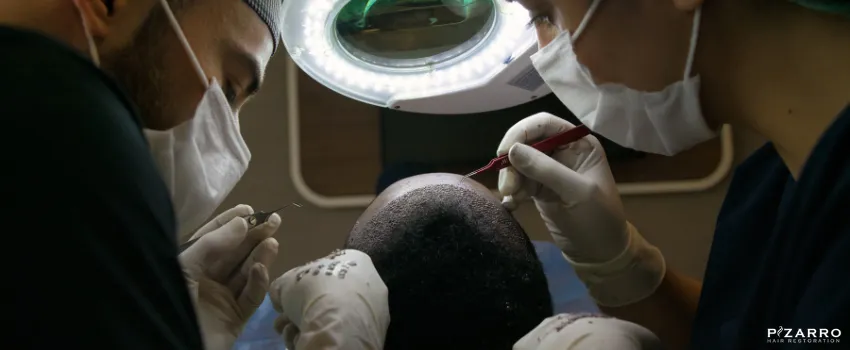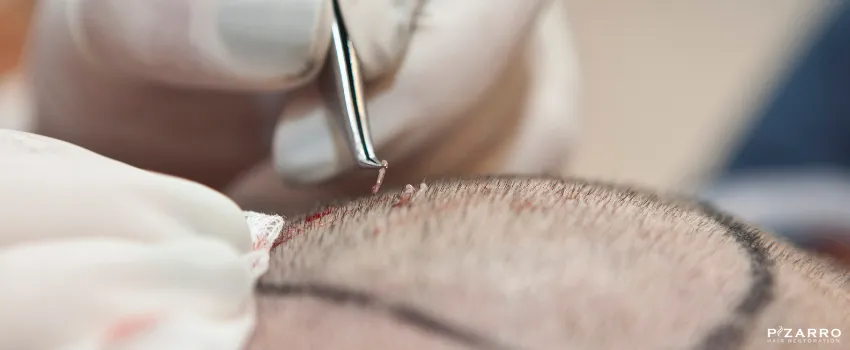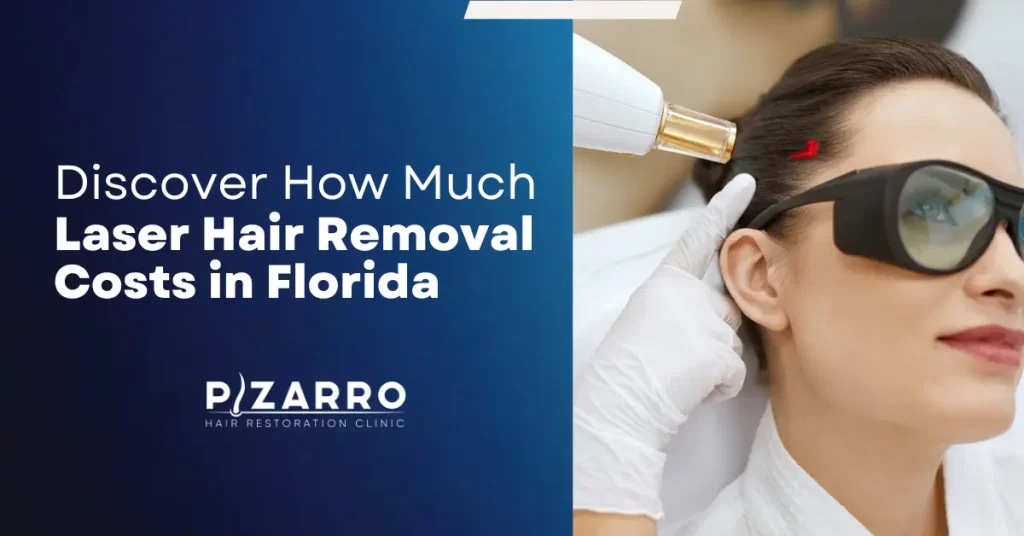If you’re among the many people seeking a long-term solution to hair loss, a hair transplant may have crossed your mind. However, the thought of undergoing surgery can be daunting. But what if there was a way to get the results you want without the risks and drawbacks of traditional hair restoration procedures?
That’s where ARTAS hair transplants come in. This robotic hair transplant technology offers a safe and effective alternative, allowing you to regain confidence and a full head of hair. But before you jump in, having all the facts is essential. In this article, we’ll walk you through hair transplant FAQs to help you make informed decisions about your hair restoration journey.
What is ARTAS Robotic Hair Transplant?

Before discussing hair transplant FAQs, it’s important to define the procedure. What is ARTAS robotic hair transplant? It is a minimally invasive hair restoration procedure that uses robotic technology to harvest hair follicles for transplantation. The ARTAS robotic hair transplant system is equipped with advanced imaging and precision tools, allowing it to identify and extract healthy hair follicles accurately.
The procedure begins with the ARTAS robotic system scanning the donor area of the scalp to identify suitable hair follicles for extraction. Once identified, the robot’s arm, guided by sophisticated algorithms, selectively harvests individual follicles. The use of robotic technology ensures precision and consistency in the extraction process.
After the follicles are extracted, the surgical team takes over, creating tiny recipient sites in the desired areas of the scalp. The harvested follicles are then carefully transplanted into these sites, following the natural hair growth pattern, to achieve aesthetically pleasing and natural-looking results.
What are the advantages of an ARTAS robotic hair transplant?
One of the most common hair transplant FAQs is about the advantages of an ARTAS robotic hair transplant, which include:
-
Precision – The ARTAS robotic system offers unparalleled accuracy in harvesting hair follicles, resulting in a more natural-looking and aesthetically pleasing hairline.
-
Minimally Invasive – The robotic procedure reduces the risk of scarring and promotes a quicker recovery than traditional hair transplant methods.
-
Consistency – The robot ensures consistent and uniform graft harvesting, minimizing the risk of graft damage and improving overall transplant outcomes.
-
Reduced Human Error – Automation minimizes the likelihood of human error during the harvesting process, enhancing the safety and efficacy of the procedure.
-
Faster Procedure – The ARTAS robot can perform graft extraction more quickly than manual methods, reducing the overall duration of hair transplant surgery.
-
Customizable Hairline – Patients can work with their surgeon to customize their desired hairline, achieving a personalized and natural appearance.
-
Comfort – Robotic hair transplants are generally well-tolerated by patients, and discomfort during and after the procedure is typically minimal.
-
Long-Lasting Results – ARTAS robotic hair transplants can provide long-lasting results, allowing individuals to enjoy the benefits of their restored hair for years to come.
What are the side effects of ARTAS hair transplant?
The side effects of ARTAS hair transplant are generally minimal and subside within a few days to weeks after the procedure. These can include:
-
Discomfort and Swelling – Following an ARTAS hair transplant, some individuals may encounter mild discomfort and scalp swelling. These discomforts are generally manageable with prescribed medications and cold compresses, gradually subsiding within a few days to weeks after the procedure.
-
Temporary Numbness – In rare instances, temporary numbness might manifest in both the donor and recipient areas post-surgery. Fortunately, this numbness is typically self-resolving.
-
Itching – Itching in the recipient area is a common side effect as the scalp heals after an ARTAS hair transplant. While itching can be bothersome, it is crucial to avoid scratching the area to prevent damage to the newly transplanted follicles.
-
Redness and Irritation – Some patients may experience redness and irritation in the treated areas shortly after the ARTAS procedure. This is a normal part of the healing process and diminishes as the scalp heals.
Why do most people go for hair transplants?

While a hair transplant can effectively address hair loss, not everyone opts for this procedure. Here are some reasons why:
1. Cost
Hair transplants can be expensive, and the price can vary depending on various factors, such as the extent of hair loss, the surgeon’s experience, and the chosen technique.
Since a hair transplant is considered a cosmetic procedure, it’s typically not covered by insurance, making it a significant out-of-pocket expense for most people. The cost can be a deterrent for those on a tight budget or who prefer more affordable alternatives like medications or non-surgical hair restoration options.
2. Fear of Surgery
Some individuals are hesitant to go for a hair transplant because it is a surgical procedure and, like any surgery, carries some risks.
Although hair transplant complications are rare, the possibility of infection, bleeding, scarring, or adverse reactions to anesthesia can make people apprehensive.
3. Concerns about the outcome
While modern hair transplants can achieve natural-looking hair, there is no guarantee of success in every case. The outcome can vary depending on factors like the quality and quantity of donor hair, the skill of the surgeon, and the individual’s hair loss pattern.
Managing expectations is essential in hair transplant surgery. It’s crucial to understand that the transplanted hair may take time to grow, and some shedding can occur initially. This is also where the importance of hair transplant FAQs comes in.
Additionally, the procedure can’t prevent further hair loss, so individuals considering a hair transplant should have realistic expectations and be prepared for future hair loss.
4. Patience for results
Hair transplant surgery is a challenging fix, and it requires patience. After the procedure, the transplanted hair typically falls out within a few weeks, and new hair growth will gradually emerge in the following months.
It can take several months for the transplanted hair to become fully established and grow normally. Some individuals may see significant results in as little as six months, while others may need to wait a year or more. The time frame can vary from person to person, and this waiting period can deter those seeking immediate hair restoration.
Is hair restoration surgery worth it?
Pricing is a common topic in most hair transplant FAQs. And yes, hair restoration surgery can be worth it for many individuals experiencing hair loss. Unlike other non-surgical options such as medications or wearing wigs, it offers a permanent solution. Hair restoration can give you a natural-looking head of hair, boosting your self-confidence and improving your overall quality of life.
However, it’s important to note that the success of hair restoration surgery depends on various factors, including the extent of your hair loss, the quality and quantity of donor hair, and your expectations.
If you’re considering hair restoration surgery, it’s crucial to have a thorough consultation with a qualified hair restoration specialist to determine the most suitable technique for your unique needs. Not everyone is a good candidate for every hair restoration procedure, so a personalized approach is essential to achieve the best possible results.
Key Takeaway
ARTAS hair transplant is a modern and innovative approach to hair restoration. It combines the precision of robotic technology with the skills of a surgeon to deliver safe and effective results. These hair transplant FAQs show that choosing ARTAS for your hair transplant can offer you the benefits of precise and consistent outcomes, minimized discomfort, and a faster recovery period.
While ARTAS hair transplants are a great choice, the success of the procedure ultimately depends on the surgeon’s expertise.
Transform Your Look with Pizarro Hair Restoration
At Pizarro Hair Restoration, we take pride in our experienced team. We’re here to ensure that you receive the best care possible. Book a consultation with us today, and let’s bring back your confidence through our expert ARTAS iX Robotic FUE in Orlando, FL!






